
How to reduce clutter in your home is a transformative journey that goes beyond simply tidying up. It’s about creating a living space that reflects your values, promotes tranquility, and enhances your overall well-being. Clutter not only affects the aesthetics of your home but also has a profound impact on your mental state.
It can evoke feelings of stress, overwhelm, and a sense of being trapped in a disorganized environment. If you’re tired of navigating through piles of stuff and yearn for a serene and harmonious living space, you’ve come to the right place. In this comprehensive guide, I will walk you through five easy steps to reduce visual clutter and reclaim your home as a sanctuary of calmness and order.
Understanding the Impact of Visual Clutter
Visual clutter has a sneaky way of infiltrating our lives. It accumulates slowly over time, occupying valuable space in our homes and our minds. Every item that doesn’t have a designated place contributes to the visual chaos, making it difficult to find what we need and causing unnecessary stress. Additionally, clutter can hinder our ability to relax and focus, leading to decreased productivity and a constant feeling of being overwhelmed.
“Decluttering isn’t about creating sterile, empty spaces; it’s about editing your belongings to let the things you truly love shine. Focus on removing what no longer serves you, and allow your remaining possessions to tell your story and enhance your daily life.”
Joanna Gaines, Magnolia Market co-founder and designer
By addressing visual clutter, we create an environment that supports our well-being and allows us to thrive. A clutter-free home promotes mental clarity, reduces stress levels, and fosters a sense of peace and harmony. It provides us with a space where we can recharge, be creative, and fully enjoy our surroundings.
The Importance of Taking Action
How to reduce clutter requires intentional effort and a commitment to change. It’s not a one-time task but an ongoing process that involves creating new habits and maintaining a clutter-free environment. Taking action is the first step towards reclaiming control over your living space and improving your quality of life.
By following the five easy steps outlined in this guide, you’ll learn how to declutter, simplify, and organize your belongings effectively. You’ll discover practical strategies for maximizing storage space, optimizing furniture placement, and implementing organizational tools that make staying organized a breeze. Additionally, I’ll explore the benefits of establishing a decluttering routine and provide valuable tips for maintaining a clutter-free home in the long run.
So, if you’re ready towards a visually appealing, organized, and peaceful home, let’s dive into the five easy steps how to reduce clutter and create a space that truly reflects your values and promotes a sense of well-being.
“If you are looking for a way to style your space with wall art without breaking your piggy bank, then I recommend reading “10 Surprising Benefits of Printable Wall Art”
Step 1: Declutter and Simplify
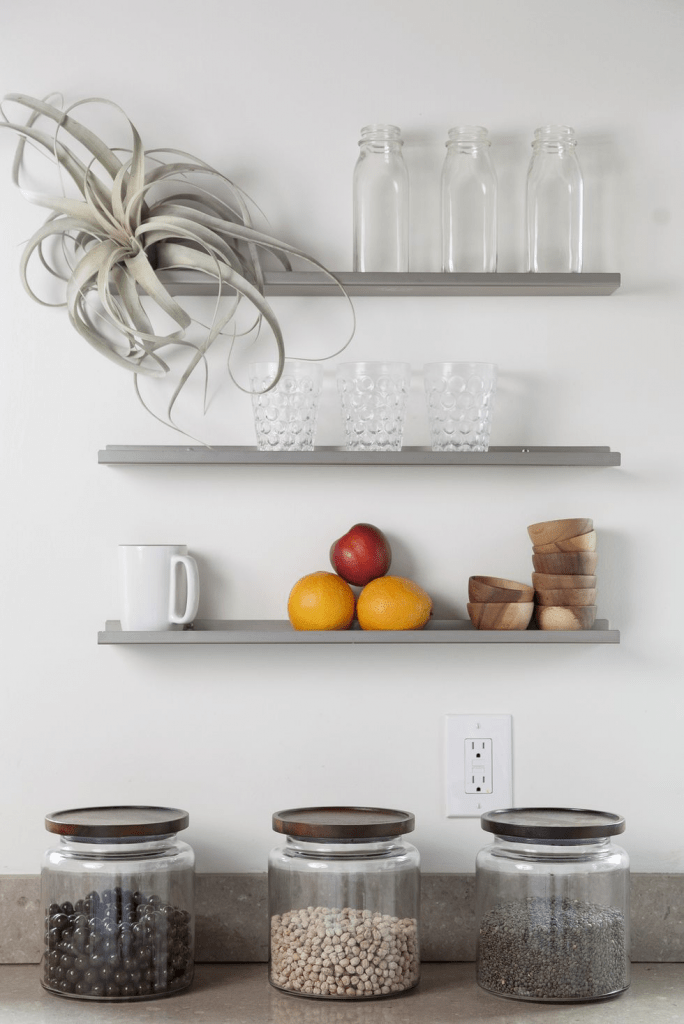
The first and most important step on how to reduce clutter is decluttering and simplifying your belongings. It’s time to take a critical look at your possessions and determine what truly brings value to your life. Here’s how you can approach the decluttering process:
Start with a single room:
Begin with one room at a time to avoid feeling overwhelmed. Choose an area that tends to accumulate the most clutter, such as the living room or bedroom.
Sort items into categories:
Create categories for your belongings, such as “Keep,” “Donate,” “Sell,” and “Discard.” As you go through each item, ask yourself if it’s something you use regularly, if it holds sentimental value, or if it enhances your living space. Be honest with yourself and avoid holding onto items out of guilt or obligation.
The Marie Kondo method:
Embrace the “spark joy” principle popularized by Marie Kondo. Hold each item in your hands and ask yourself if it sparks joy. If it doesn’t, it’s time to let it go.
Consider storage limitations:
Take into account the storage space available in your home. If you have limited storage options, be selective about the items you choose to keep. Focus on items that are truly essential or hold significant sentimental value.
Tackle paper clutter:
Paper clutter is a common source of visual chaos. Sort through your documents, bills, and old magazines, and create a system for organizing important papers. Consider going digital with important documents to minimize paper clutter.
Address sentimental items:
Sentimental items can be the most challenging to declutter. Take photographs of sentimental objects that are taking up physical space but hold emotional value. This way, you can preserve the memories without the clutter.
Examples:
- Let’s say you have a collection of old magazines that have been piling up in your living room. Ask yourself if you genuinely enjoy reading them or if they are just taking up space. If you rarely refer to them, it’s time to let them go. Consider donating them to a local library or recycling them.
- Another example is clothing. Take a critical look at your wardrobe and assess if you wear each item regularly. If you haven’t worn a piece of clothing in over a year or it no longer fits your style, it’s a good indication that it’s time to donate or sell it.
Remember, the goal is to create a living space that reflects your values and brings you peace. By decluttering and simplifying your belongings, you’ll open up physical and mental space in your home.
Step 2: Create Adequate Storage Solutions
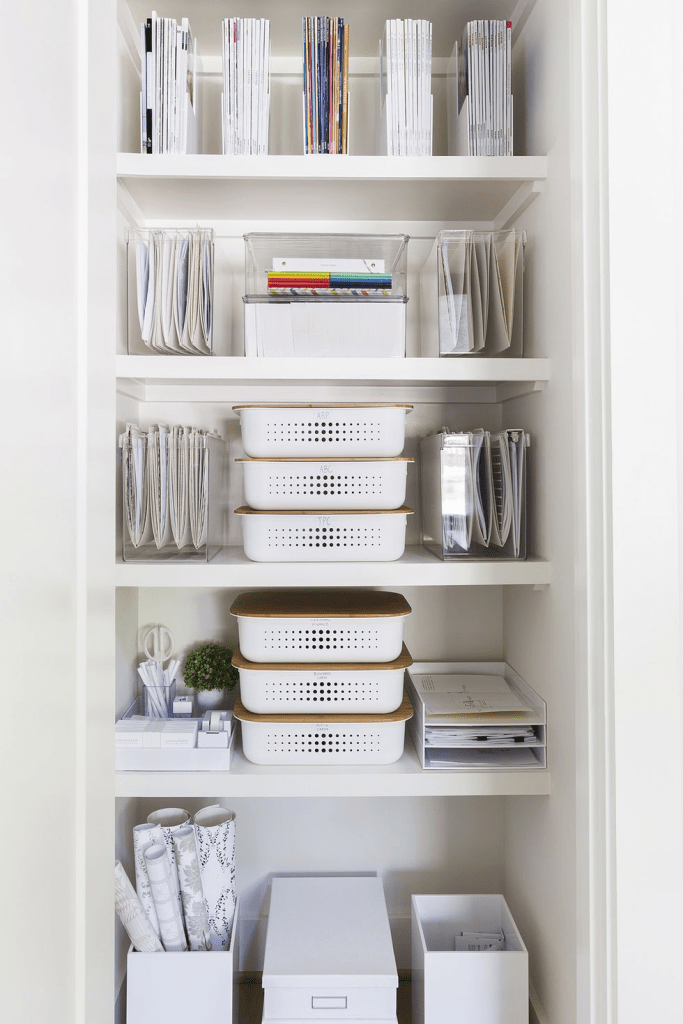
Having effective storage solutions is key to maintaining an organized and clutter-free home. Here are some ideas to help you maximize your storage space:
Utilize hidden storage:
Choose furniture pieces that offer hidden storage options. For example, opt for ottomans with built-in compartments or coffee tables with drawers. These pieces not only provide extra storage but also serve functional purposes in your living space.
Invest in shelves and cabinets:
Install shelves or cabinets in areas where clutter tends to accumulate, such as entryways or hallways. Use them to store everyday items like keys, bags, or shoes, keeping them organized and out of sight.
Use decorative baskets and boxes:
Incorporate decorative baskets and boxes into your home decor. They can be both functional and aesthetically pleasing. Use them to store miscellaneous items like remote controls, toys, or magazines. These storage solutions add a touch of style while reducing visual clutter.
Maximize vertical space:
Take advantage of vertical space in your home. Install wall-mounted shelves or racks to store items like books, plants, or decorative objects. This helps free up valuable floor space and adds visual interest to your walls.
Examples:
- In the bedroom, invest in a bed frame with built-in storage drawers. Use these drawers to store extra linens, blankets, or out-of-season clothing.
- In the kitchen, utilize a hanging pot rack to store and display your cookware. This not only saves cabinet space but also adds a stylish element to your kitchen decor.
By creating designated storage spaces for your belongings, you’ll be able to maintain an organized and clutter-free home.
Step 3: Optimize Furniture Placement
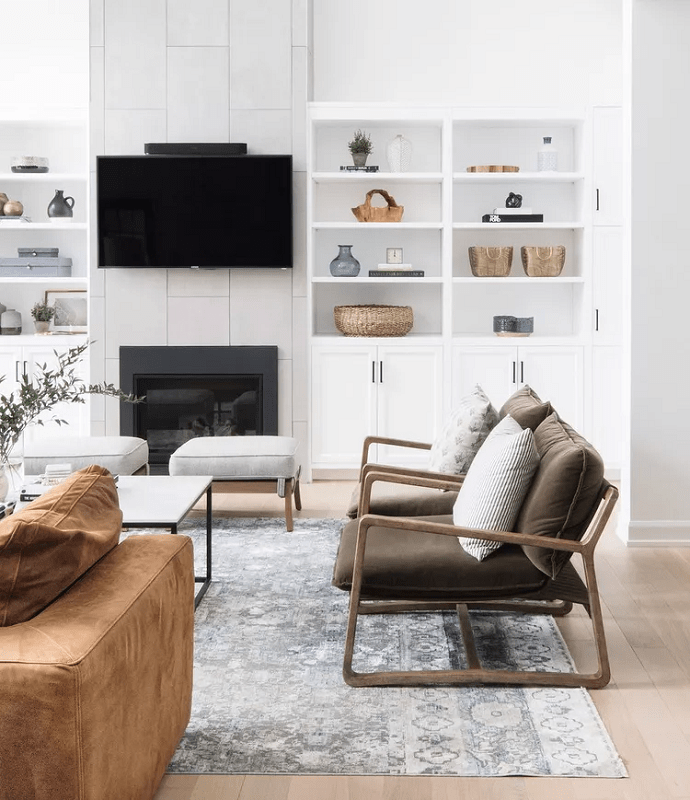
The way you arrange your furniture can have a significant impact on the visual clutter in your home. Follow these tips to optimize your furniture placement:
Embrace minimalism:
When it comes to furniture, less is more. Avoid overcrowding rooms with too many pieces. Instead, choose furniture that serves multiple purposes or has a minimalist design. Opt for functional pieces that offer storage options or have clean lines.
Consider traffic flow:
Arrange your furniture in a way that promotes easy movement and flow. Ensure there’s enough space to walk around without feeling cramped. This not only creates a more visually pleasing environment but also improves the functionality of your living space.
Let natural light in:
Arrange furniture to allow natural light to flow into your home. Position larger furniture pieces away from windows to avoid blocking light. Natural light creates a sense of openness and can make your space feel more spacious and airy.
Examples:
- In the living room, opt for a streamlined sofa and pair it with a couple of armchairs and a coffee table. Leave enough space between furniture pieces to create an open and inviting atmosphere.
- In the dining room, choose a dining table and chairs that fit the space without overwhelming it. Consider a round table if you have a smaller dining area, as it takes up less visual space.
By optimizing furniture placement, you’ll create a visually appealing and functional layout that contributes to a clutter-free home.
Step 4: Utilize Clever Organizational Tools
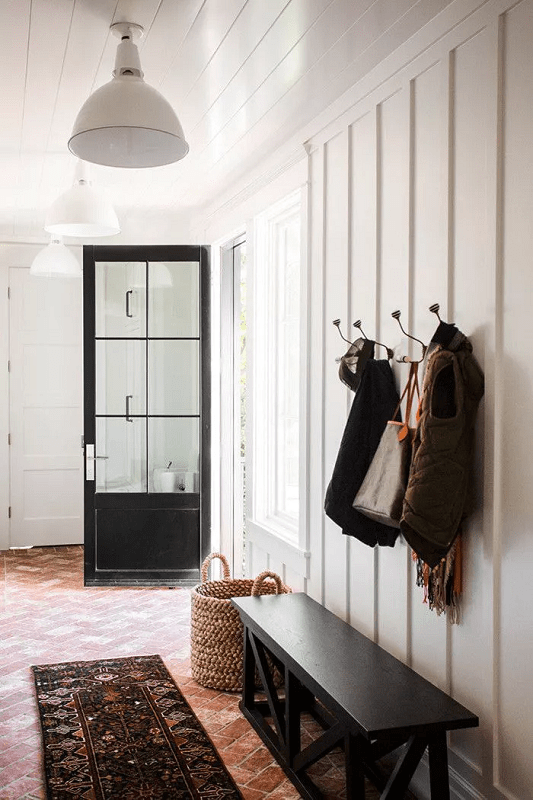
In addition to storage solutions, incorporating clever organizational tools can make a world of difference in reducing visual clutter. Here are some tools and ideas to help you stay organized:
Drawer dividers:
Use drawer dividers to separate and organize items within drawers. This prevents small items from getting mixed up and creates a tidy and accessible storage solution.
File organizers:
Invest in file organizers for important documents and paperwork. Categorize them by type or use color-coded folders for easy reference. Keep these organizers in a designated area to avoid paper clutter from spreading throughout your home.
Closet systems:
Install closet systems or use hanging organizers to maximize closet space. Sort clothing items by type and color to make them easily accessible and visually appealing.
Hooks and racks:
Utilize hooks and racks in various areas of your home. Hang coats, bags, or hats on hooks near the entrance. Use racks to store shoes or display decorative items.
Examples:
- In the home office, use cable management solutions to keep cords and cables organized and out of sight. This prevents them from tangling and creating visual clutter on your desk.
- In the bathroom, install a shower caddy or shelf to keep toiletries neatly organized. Use small baskets or bins to group similar items together, such as hair products or skincare essentials.
By incorporating these organizational tools into your home, you’ll maintain a clutter-free environment and easily find what you need when you need it.
Step 5: Implement a Regular Cleaning Routine
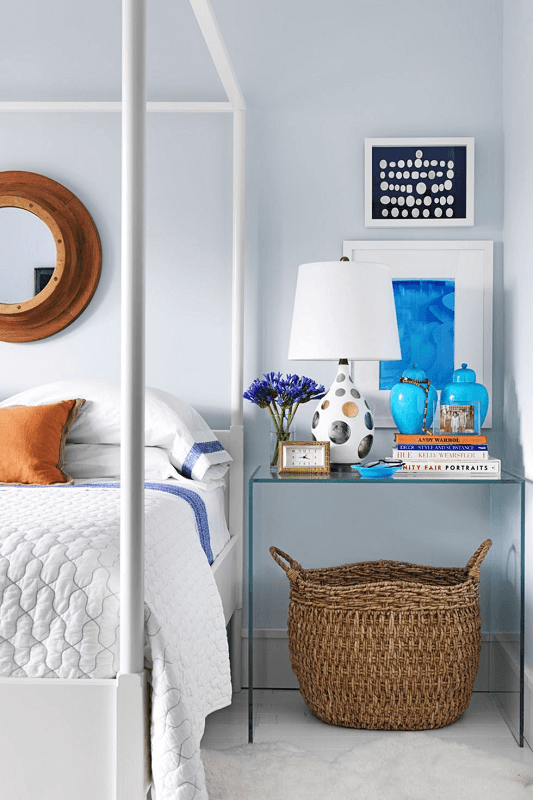
Consistency is key when it comes to maintaining a clutter-free home. Establishing a regular cleaning routine will help you stay on top of visual clutter and prevent it from piling up again. Here’s how to implement an effective cleaning routine:
Schedule decluttering sessions:
Set aside dedicated time each week or month to declutter and organize your space. Use this time to reassess your belongings, tidy up surfaces, and eliminate any items that have crept back in.
Clean as you go:
Develop the habit of cleaning up after yourself as you go about your daily activities. Put items back in their designated places immediately after using them. This prevents clutter from accumulating and saves you time during your dedicated cleaning sessions.
Regular surface cleaning:
Wipe down surfaces regularly to keep your home looking fresh and inviting. Dust furniture, clean countertops, and vacuum or sweep floors to remove any dirt or debris.
Examples:
- In the kitchen, make it a habit to clean up dishes and wipe down countertops after each meal. This prevents dirty dishes from piling up and keeps your kitchen looking clean and organized.
- In the bedroom, make your bed every morning as part of your daily routine. A neatly made bed instantly adds a sense of order to your space.
By implementing a regular cleaning routine, you’ll maintain a clutter-free and visually appealing home effortlessly.
What Are The Best Storage Solutions To Help You Stay Organized:
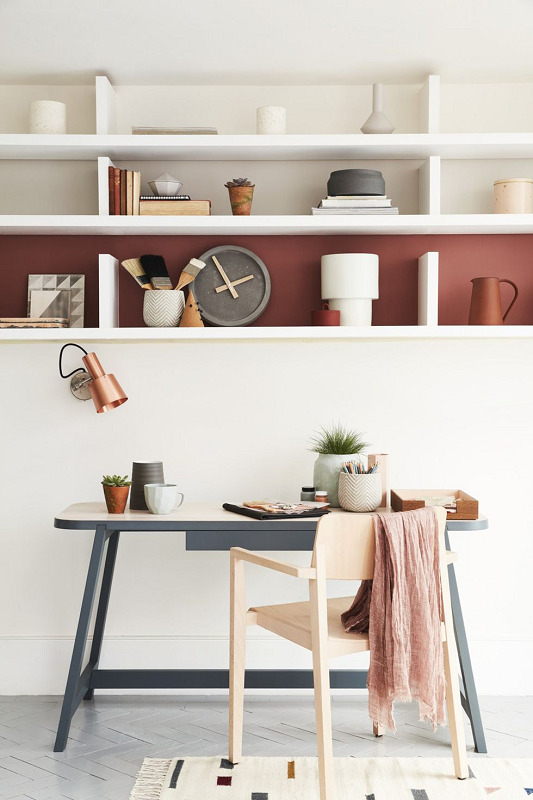
When it comes to staying organized, choosing the right storage solutions is essential. The best storage solutions are those that not only maximize space but also make it easy to access and maintain your belongings. Here are some top storage solutions to help you stay organized:
“Remember, decluttering is more than just making your space look good; it’s about creating a functional and efficient environment. Prioritize items that serve a purpose and bring you joy. Let go of anything that holds you back, physically or mentally, and make space for what truly matters.”
Marie Kondo, tidying expert and author
Clear Plastic Bins:
Clear plastic bins are versatile and practical storage options. They allow you to see the contents without the need to open each container, making it easy to locate items. Use them in closets, pantries, or under the bed to store clothing, shoes, kitchen supplies, or seasonal decorations. Label the bins to further enhance organization and quick retrieval.
Shelving Units:
Shelving units provide ample storage space and can be customized to fit your needs. They are ideal for areas like garages, basements, or utility rooms. Use sturdy shelves to store boxes, tools, gardening supplies, and other bulky items. You can also add baskets or bins to keep smaller items organized and prevent them from cluttering the shelves.
Pegboards:
Pegboards are excellent storage solutions for areas like workshops, craft rooms, or kitchens. Install a pegboard on the wall and use hooks, baskets, and shelves to hang and store tools, art supplies, pots, pans, and other frequently used items. Pegboards keep everything within reach and eliminate the need for rummaging through drawers or cabinets.
Over-the-Door Organizers:
Over-the-door organizers are space-saving wonders that work well in small rooms or areas with limited storage. Hang them on the back of doors to store shoes, accessories, cleaning supplies, or even pantry items. These organizers make use of vertical space, keeping your belongings visible and easily accessible.
Drawer Dividers:
Drawer dividers are a must-have for organizing drawers in various areas of your home. They keep items separated and prevent them from getting mixed up or lost in the depths of a drawer. Use drawer dividers in the kitchen for utensils, in the office for stationery, or in the bathroom for cosmetics and toiletries.
Hanging Closet Organizers:
Hanging closet organizers are perfect for maximizing vertical space in your wardrobe. They typically feature multiple shelves or compartments and can hold clothing, shoes, accessories, or even handbags. Hanging organizers keep your belongings neatly arranged and allow for easy visibility and access.
Examples:
- In the entryway, install a wall-mounted coat rack with hooks for jackets, hats, and bags. Place a shoe rack or a small shoe cabinet by the door to keep footwear organized and prevent it from cluttering the floor.
- In the laundry room, install wall-mounted shelves or cabinets to store laundry supplies, cleaning products, and extra linens. Use baskets or bins on the shelves to keep smaller items like clothespins or dryer sheets organized.
By incorporating these storage solutions into your home, you can stay organized and maintain a clutter-free environment. Remember to assess your specific needs and choose storage options that fit your space and lifestyle. With the right storage solutions in place, you can enjoy a more organized and stress-free living space.
How to establish a declutter routine that works for your needs
Establishing a declutter routine that works for your needs is crucial for maintaining an organized and clutter-free home. Here are some steps to help you create an effective decluttering routine:
“Don’t get overwhelmed by the mountain of clutter! Tackle it in bite-sized pieces. Focus on one drawer, one shelf, or even one corner at a time. Each small victory will motivate you to keep going, and soon you’ll find your entire home transformed.”
Emily Henderson, interior designer and author
Assess your schedule and preferences:
Consider your daily schedule and lifestyle to determine the best time for decluttering. Some people prefer tackling small decluttering tasks daily, while others set aside dedicated time on weekends. Choose a schedule that aligns with your energy levels and commitments.
Start with small, manageable tasks:
Break down the decluttering process into smaller tasks to avoid feeling overwhelmed. Focus on one area or category at a time, such as a single drawer, a closet shelf, or a specific room. This approach allows you to see progress and prevents decluttering from becoming an arduous task.
Set realistic goals:
Define clear goals for each decluttering session. For example, your goal might be to declutter and organize a specific shelf or to sort through a stack of papers. By setting achievable goals, you’ll stay motivated and maintain momentum in your decluttering routine.
Create a sorting system:
Establish a sorting system to categorize items as you declutter. Use bins or boxes labeled “Keep,” “Donate,” “Sell,” and “Discard.” This system helps you make decisions quickly and ensures items are properly sorted for further action.
Make decluttering decisions quickly:
Train yourself to make decisions swiftly while decluttering. Avoid getting caught up in sentimentality or indecision. Ask yourself if an item is truly necessary or brings you joy. If not, let it go. Remember that decluttering is about creating space and simplifying your surroundings.
Maintain an organizational system:
As you declutter, develop an organizational system that works for you. Designate specific places for each item and ensure they are returned to their designated spots after use. This prevents clutter from reaccumulating and makes tidying up a breeze.
Examples:
- If you have limited time during weekdays, set aside 10 minutes each evening to declutter a small area, such as a kitchen counter or a desk. This consistent effort will yield noticeable results over time.
- If weekends are more suitable for decluttering, create a decluttering schedule where you tackle one room or category each weekend. For example, dedicate Saturday mornings to decluttering the garage and Sunday afternoons to organizing your wardrobe.
By establishing a declutter routine that aligns with your lifestyle and preferences, you’ll create a sustainable habit of maintaining an organized and clutter-free home. Consistency is key, so find a routine that works for you and stick to it. Remember, the benefits of a decluttered space go beyond the physical environment, promoting a sense of calmness and enhancing your overall well-being.
Most Popular Post:
10 Surprising Benefits of Printable Wall Art
15 Must-Have Accessories For Styling A Coffee Table
How to Choose the Perfect Interior Color Scheme for Your Home
Expert Guide On How To Buy A Rug For Each Room
Conclusion
How to reduce clutter in your home is a transformative process that can significantly improve the overall look and feel of your living space. By following the five easy steps outlined in this article—decluttering and simplifying, creating adequate storage solutions, optimizing furniture placement, utilizing clever organizational tools, and implementing a regular cleaning routine—you can create a visually appealing and organized home environment.
Remember, maintaining a clutter-free home requires consistency and a mindful approach to the items you bring into your space. Embrace the journey to a clutter-free home and enjoy the benefits of a calm and harmonious living environment.
How to Reduce Clutter-(FAQs)
Q. How long does it take to reduce visual clutter in a home?
The time it takes to reduce visual clutter in your home depends on various factors such as the size of your home, the amount of clutter, and your commitment to the process. While the initial decluttering and organizing may take a few days or weeks to complete, maintaining a clutter-free home is an ongoing effort that requires regular attention.
Q. What are some common challenges in reducing visual clutter?
One common challenge in reducing visual clutter is sentimentality. It can be difficult to let go of items that hold sentimental value, even if they contribute to visual clutter. Another challenge is indecisiveness when it comes to organizing and categorizing belongings. It’s important to stay focused and make firm decisions to overcome these challenges.
Q. Can reducing visual clutter improve mental well-being?
Yes, reducing visual clutter can have a positive impact on your mental well-being. A clutter-free environment promotes a sense of calmness and reduces stress levels. It allows you to focus better and enhances your overall mood. Creating a visually appealing home can contribute to a more peaceful and relaxing atmosphere, benefiting your mental health.
Q. Should I hire a professional organizer to help reduce visual clutter?
Hiring a professional organizer can be beneficial if you feel overwhelmed or unsure where to start. They can provide guidance, expertise, and motivation throughout the decluttering and organizing process. However, it is also possible to achieve a clutter-free home on your own by following the steps outlined in this article.
Q. What are some practical tips for maintaining a clutter-free home?
To maintain a clutter-free home, consider implementing the following tips:
- Regularly reassess your belongings and declutter as needed.
- Avoid impulse purchases and be mindful of what you bring into your home.
- Practice the “one in, one out” rule for items you no longer need.
- Assign a designated place for every item to prevent clutter from accumulating.
- Set aside time each week for quick tidying and organization.
- Involve your family members in the decluttering process to ensure everyone contributes to maintaining a clutter-free home.
CATCH THE LATEST IN HOME DECOR TRENDS:

Steal These 15 Expert-Approved Decorating Secrets

How To Accessories Your Living Room

Small Space? 10 Ways To Make A Room Appear Bigger

Make Your space Look Expensive
GET CAUGHT UP ON ALL THE INSPIRING DECOR TIPS:

18 Fresh Decorating Ideas To Update Your Fireplace

How To Create An Art Gallery Wall

